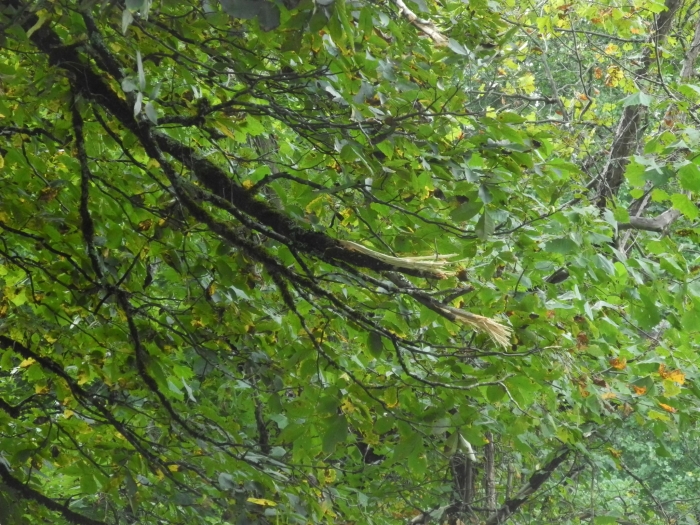Red Hickory
(Carya ovalis)
Red Hickory (Carya ovalis)
/
/

Michael J. Papay
CC BY 4.0
Image By:
Michael J. Papay
Recorded By:
Copyright:
CC BY 4.0
Copyright Notice:
Photo by: Michael J. Papay | License Type: CC BY 4.0 | License URL: http://creativecommons.org/licenses/by/4.0/ | Rights Holder: Michael J. Papay | Publisher: iNaturalist | Date Created: 2021-09-21T15:14:43-07:00 |






















Estimated Native Range
Summary
Carya ovalis, commonly known as Red Hickory, is a deciduous tree native to the mixed mesophytic forests of the Southeastern United States, particularly in the Appalachian region. It can grow to a height of 30 m (100 ft) with a straight trunk that often extends the full height of the tree. The branches are strong and stout, ascending in the upper crown and drooping in the lower crown, creating a broad, thick, column-shaped form that casts dense shade. The tree’s longevity is notable, with individuals living between 100–250 years. The bark is gray and smooth when young, becoming furrowed with age. The fruit is a small, round or slightly elliptical nut, borne singly or in clusters of 2-3. Flowers are produced in spring, with male flowers being long, green, inconspicuous drooping catkins, and female flowers featuring a tuft of sticky green tissue from a swollen base.
Red Hickory is valued for its hard, dense wood and the nuts it produces, which are consumed by wildlife. It is less commonly used in cultivation compared to other hickories due to its slow growth rate, but it can be planted as a shade tree in large spaces or naturalized areas. It requires full sun to part shade, medium water, and well-drained soils. While it is not prone to many diseases, it can suffer from hickory bark beetle attacks. Red Hickory is not known for being invasive but can be difficult to transplant due to its deep taproot.CC BY-SA 4.0
Red Hickory is valued for its hard, dense wood and the nuts it produces, which are consumed by wildlife. It is less commonly used in cultivation compared to other hickories due to its slow growth rate, but it can be planted as a shade tree in large spaces or naturalized areas. It requires full sun to part shade, medium water, and well-drained soils. While it is not prone to many diseases, it can suffer from hickory bark beetle attacks. Red Hickory is not known for being invasive but can be difficult to transplant due to its deep taproot.CC BY-SA 4.0
Plant Description
- Plant Type: Tree
- Height: 70-100 feet
- Width: 50-70 feet
- Growth Rate: Slow
- Flower Color: N/A
- Flowering Season: Spring
- Leaf Retention: Deciduous
Growth Requirements
- Sun: Full Sun, Part Shade
- Water: Medium
- Drainage: Medium, Fast
Common Uses
Bee Garden, Bird Garden, Butterfly Garden, Edible*Disclaimer: Easyscape's listed plant edibility is for informational use. Always verify the safety and proper identification of any plant before consumption.
Natural Habitat
Native to mixed mesophytic forests in the Southeastern United States, especially the Appalachian region
Other Names
Common Names: Sweet Pignut Hickory, Pignut Hickory
Scientific Names: , Carya ovalis, Carya glabra var. odorata, Carya ovalis var. obovalis, Carya ovalis var. odorata, Carya porcina var. acuta, Carya ovalis f. vestita, Carya glabra subsp. odorata, Carya ovalis f. acuta, Hicoria glabra var. odorata
GBIF Accepted Name: Carya ovalis (Wangenh.) Sarg.